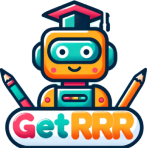Get a free exercise
AI in K-12 Education: A Game-Changer, If We Allow It
AI has the potential to transform K-12 education by enhancing teaching, personalizing learning, and modernizing outdated systems for a more effective and inclusive future.
Date of writing
February 20, 2025
Time of reading
2 minutes
Artificial intelligence is here, and it has the power to transform the American K-12 education system, according to Prometric. The real question is: Are we ready to embrace it?
In his recent op-ed for Education Week’s AI in Education Spotlight, Dr. Jesús Jara, former superintendent of Clark County, Nevada, and now K-12 Global Practice Leader at Prometric, reflects on AI's potential in education. His perspective, shaped by years of experience leading one of the largest U.S. school districts, underscores a key challenge: resistance to change.
"AI isn’t here to replace teachers; it’s here to empower them," Dr. Jara explains. Instead of fearing automation, educators can harness AI to streamline administrative tasks, identify curriculum gaps, and personalize learning experiences. This shift allows teachers to focus on what truly matters: engaging with students and fostering deeper learning.
Dr. Jara’s personal journey adds weight to his argument. As an immigrant from Venezuela, he navigated the American education system as a bilingual English learner. He credits a dedicated teacher, Miss Kilbride, for helping him succeed. "Not every student will have a Miss Kilbride," he notes, but AI-driven tools can help bridge educational disparities and provide personalized support where needed.
One of AI’s most promising applications in education is its ability to detect and resolve curriculum gaps. Dr. Jara recounts a conversation with a superintendent struggling with ninth-grade Algebra I outcomes. Traditional approaches hadn’t improved results. However, by leveraging Prometric’s AI-powered content classification system, they identified precise misalignments in the curriculum.
"District officials were floored by the results," says Dr. Jara. "For the first time, they saw exactly where updates were needed to align with current standards. Changes were made immediately." AI not only accelerates this process but also removes human bias. Curriculum alignment, once a time-consuming and often subjective task, becomes a data-driven, objective process tailored to district needs.
Beyond assisting students, AI has the potential to support teacher development. Dr. Jara highlights that most educators lack formal training in psychometrics, the science of assessment. Yet, with AI, teachers can create high-quality assessments aligned to learning standards—something previously reserved for specialists.
"I earned a doctorate in education and never took a psychometric class," he shares. "With AI, I can confidently develop assessments and item banks that meet rigorous standards." State leaders and policymakers also stand to benefit. AI-driven tools enable them to audit and refine curricula, ensuring alignment with evolving state guidelines. The result? More effective, equitable, and up-to-date educational standards.
As AI continues to reshape industries, education must not lag behind. Dr. Jara emphasizes that AI is not a distant possibility—it is here and ready to be deployed for student success. "With AI’s transformative potential, education is on the brink of a new era—one that prioritizes equity, efficiency, and innovation," he asserts. "The question now is, will we seize the opportunity to reimagine education, or will we let outdated systems hold us back?"
The choice is ours. By embracing AI, we can create a future where every student, regardless of background, has the opportunity to thrive.
In his recent op-ed for Education Week’s AI in Education Spotlight, Dr. Jesús Jara, former superintendent of Clark County, Nevada, and now K-12 Global Practice Leader at Prometric, reflects on AI's potential in education. His perspective, shaped by years of experience leading one of the largest U.S. school districts, underscores a key challenge: resistance to change.
"AI isn’t here to replace teachers; it’s here to empower them," Dr. Jara explains. Instead of fearing automation, educators can harness AI to streamline administrative tasks, identify curriculum gaps, and personalize learning experiences. This shift allows teachers to focus on what truly matters: engaging with students and fostering deeper learning.
Dr. Jara’s personal journey adds weight to his argument. As an immigrant from Venezuela, he navigated the American education system as a bilingual English learner. He credits a dedicated teacher, Miss Kilbride, for helping him succeed. "Not every student will have a Miss Kilbride," he notes, but AI-driven tools can help bridge educational disparities and provide personalized support where needed.
One of AI’s most promising applications in education is its ability to detect and resolve curriculum gaps. Dr. Jara recounts a conversation with a superintendent struggling with ninth-grade Algebra I outcomes. Traditional approaches hadn’t improved results. However, by leveraging Prometric’s AI-powered content classification system, they identified precise misalignments in the curriculum.
"District officials were floored by the results," says Dr. Jara. "For the first time, they saw exactly where updates were needed to align with current standards. Changes were made immediately." AI not only accelerates this process but also removes human bias. Curriculum alignment, once a time-consuming and often subjective task, becomes a data-driven, objective process tailored to district needs.
Beyond assisting students, AI has the potential to support teacher development. Dr. Jara highlights that most educators lack formal training in psychometrics, the science of assessment. Yet, with AI, teachers can create high-quality assessments aligned to learning standards—something previously reserved for specialists.
"I earned a doctorate in education and never took a psychometric class," he shares. "With AI, I can confidently develop assessments and item banks that meet rigorous standards." State leaders and policymakers also stand to benefit. AI-driven tools enable them to audit and refine curricula, ensuring alignment with evolving state guidelines. The result? More effective, equitable, and up-to-date educational standards.
As AI continues to reshape industries, education must not lag behind. Dr. Jara emphasizes that AI is not a distant possibility—it is here and ready to be deployed for student success. "With AI’s transformative potential, education is on the brink of a new era—one that prioritizes equity, efficiency, and innovation," he asserts. "The question now is, will we seize the opportunity to reimagine education, or will we let outdated systems hold us back?"
The choice is ours. By embracing AI, we can create a future where every student, regardless of background, has the opportunity to thrive.

 Home
Home